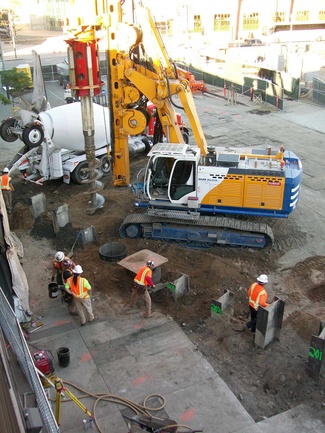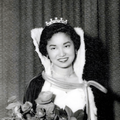Japanese Village Plaza and the Japanese American National Museum were jam-packed on Saturday and Sunday. It was a sign that business was good in Little Tokyo, but to the merchants, restaurateurs, and other J-town regulars, it represented much more.
It meant that Little Tokyo merchants asserted themselves for the first time in quite a while, and the whole thing had a unifying effect.
As previously reported in The Rafu Shimpo, Metro announced plans to close the Little Tokyo/Arts District Gold Line station December 4 through mid-February. In addition, there would be periodic closures of First Street between Alameda and Vignes streets. All of this was destined to wreak havoc with holiday shopping and tourism on which merchants have come to rely.
When business owners raised their voices in protest, Metro executives responded with earnest apologies. However, after carefully weighing the options, Metro came back with the news that they couldn’t possibly postpone the closures.
That’s when the furikake hit the fan. Within a few hours, business owners, working in conjunction with the Little Tokyo Business Association, responded with the ferocity of an angry Issei grandmother—you know, the sweet old lady who loses it when you break the porcelain platter she lovingly carried all the way from Osaka before the war.
First of all, let’s not kid ourselves. The best we can do as a community is to try to keep the frustration to a minimum until the $1.4 billion Regional Connector fulfills its destiny and brings the world (or at least a big chunk of Southern California) to Little Tokyo’s doorstep.
In the biblical parable, David was the smallest and youngest of eight sons. He tended the sheep for his father, an Israelite. David was destined to be king, but no one really believed it because of his size. Goliath was nine feet tall and an enemy of the Israelites. He scoffed when he saw the diminutive David.
What Goliath didn’t realize was that David had fought lions and bears to protect his father’s sheep. He had the heart of a king and wasn’t afraid of the giant. On the way to confront Goliath, David picked up five smooth stones. As Goliath advanced toward him, David pulled out a stone from his pouch, hurled it at the giant, and hit him between the eyes. Goliath fell to the ground.
As a transportation agency, Metro serves one of America’s largest, most populous counties—9.6 million people, nearly one-third of California’s residents, in a 1,433-square mile service area.
To better understand why protecting and preserving our community is so important, it helps to know where we have been. Beginning in the fall of 1945, Japanese Americans returned to their former communities to rebuild and resettle. Religious institutions became the nucleus of these post-war districts, and these reconstituted communities began to grow.
Consequently, Little Tokyo was once much larger than it is today. George Takahashi, stalwart member of the St. Francis Xavier Japanese Catholic Center (formerly “Maryknoll”) dubbed it the “Greater Historic Little Tokyo.”
Little Tokyo once reached all the way to Sixth Street and west to Main Street. It also encompassed the northeast block at First and Los Angeles streets, where eminent domain was exercised to make way for Parker Center.
Greater Historic Little Tokyo is a distinct brotherhood of shops, restaurants, religious and nonprofit institutions, theaters, two world-class museums, professional offices, newspaper publishers, and residents that was founded and built by the Issei pioneers, rebuilt by Nisei, and if we’re lucky, carried on by the Sansei, Yonsei, and beyond. We are the custodians of the J-Town legacy.
For motivation, I often invoke the spirit of my grandmother, Hisayo (Nezu) Endo, a feisty, no-nonsense teacher who in the early 1900s traveled from Shizuoka to Utah, where she taught the children of the arriving Japanese immigrants.
The intrepid men and women who run businesses in this community today draw their resolve, at least in part, from their own parents and grandparents, an intelligent, hard-working, honorable, principled lot. Today’s Little Tokyo merchant is armed with the same determination to survive.
Obaachan would be proud.
*This article was originally published by The Rafu Shimpo on December 14, 2015.
© 2015 Ellen Endo






